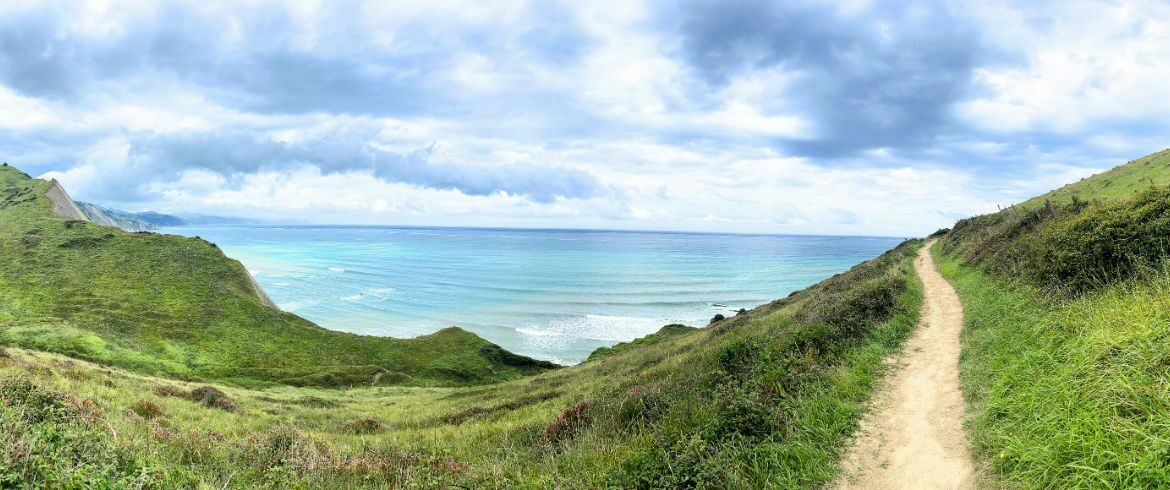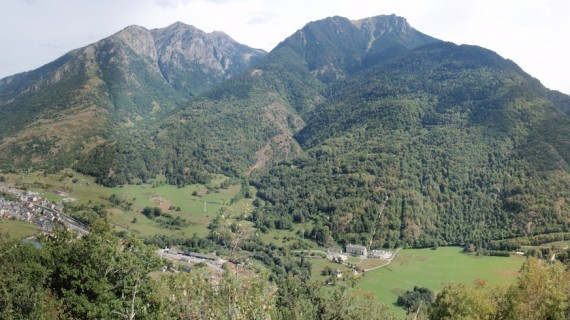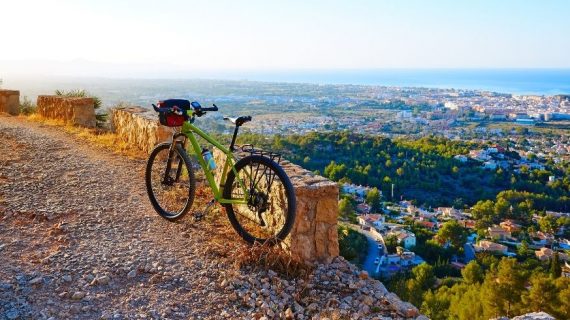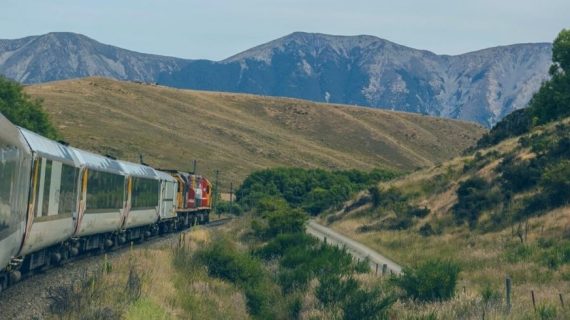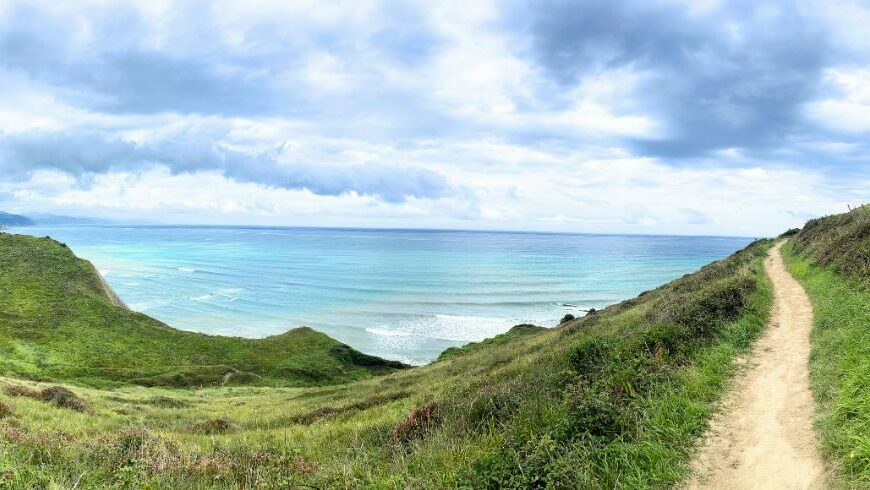
The long and rugged Basque coast offers countless opportunities for surfing or visiting picturesque fishing villages. It also allows you to explore beautiful green routes between the majestic hills and rocks, and the blue of the Cantabrian Sea. If you are a fan of slow travel, whether on foot or by bicycle, here are 3 beautiful itineraries along the Basque coast that you shouldn’t miss!
The coast of Euskal Herria or Basque Country

Euskal Herria, or the Basque Country, is a charming and diverse territory. The landscape ranges from the contemporary architecture of Bilbao to the beauty of San Sebastian, from the golden beaches of Hendaye to the elegance of Biarritz. In particular, this region hides a green rural paradise, overlooking the ocean, which you can explore on foot.
Comprising the four Spanish provinces of Bizkaia, Gipuzkoa, Alava, and Navarra, as well as the three French provinces of Labourd, Basse-Navarre, and Soule. This this territory forms what the Basques call “Ipparalde,” which means “lands of the north”. Its French counterpart, “Pays Basque”, has gained administrative significance only in recent years.
This corner of the Basque coast is still relatively undiscovered by tourists and can be enjoyed slowly along beautiful green routes.
When to Visit the Basque Coast
Climate is certainly a factor to consider when deciding the best time for your trip. Spring brings the blooming of nature while summer is the warmest period. Autumn offers unforgettable colours in the vast forests of the region and more frequent sunshine than in summer. July and August are the busiest periods and are best avoided.
3 Green Itineraries Not to Miss on the Basque Coast
1. The Camino del Norte
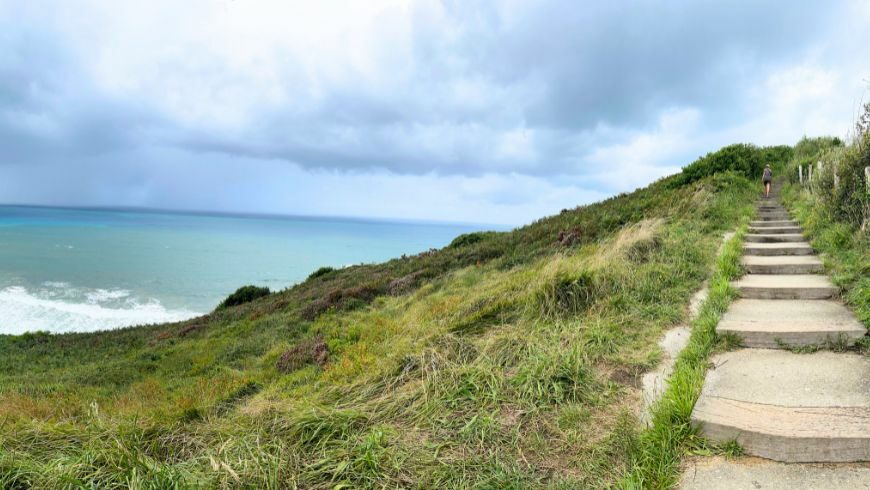
The most fascinating green itinerary in terms of landscape is the Camino del Norte, along the northern Basque coast of Spain. It starts in Irun and passes through San Sebastian, Zaraust, Deba, Guernica, Bilbao, and Portugalete before entering Cantabria. This route retraces the path used by pilgrims heading to Santiago de Compostela to reach the saint’s tomb. In fact, it was easy for ships coming from Northern Europe to dock in the ports of northern Spain and walk along this route. It unfolded entirely in territories controlled by Christian kings and princes. During this time other parts of Spain were occupied by the Moors at the time.
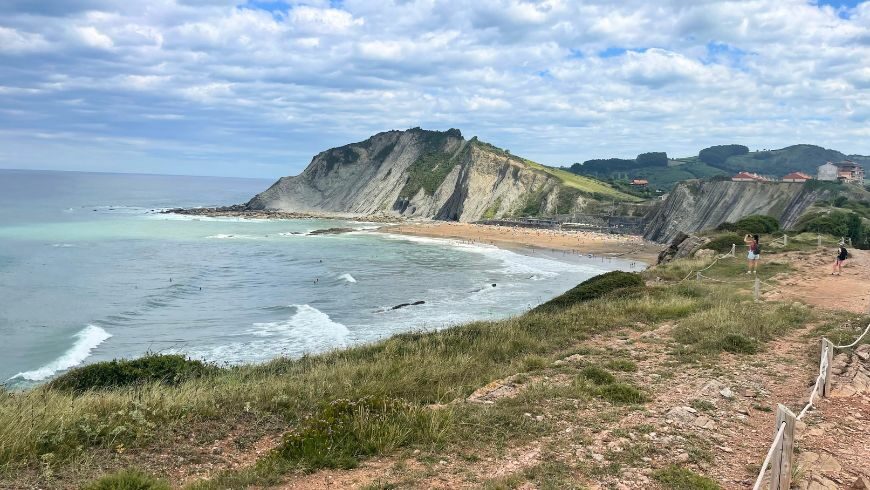
One of the most picturesque stretches of the Camino del Norte is the one that goes from Zumaia to Deba. Here is where we can enter the Geoparque de la Costa Vasca (the Geopark of the Basque Coast). At first glance, it may appear as a beautiful, but typical route. It is characterised by the thousands of shades of green that extend to the Cantabrian Sea.
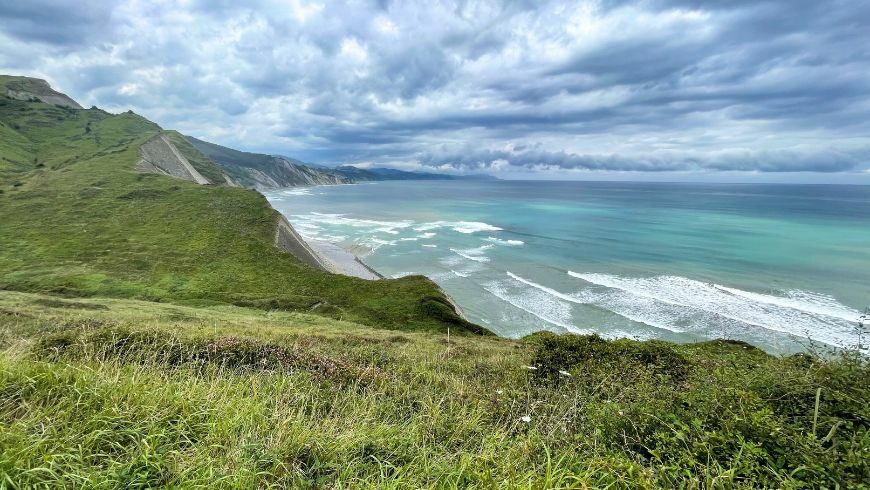
“Flysch” phenomenon
The rote’s uniqueness lies in its geological formation. The different layers of rock, formed by sediments over millions of years. Instead of horizontally, they are vertically oriented due to the collision of the Pyrenean tectonic plates. They are exposed thanks to the erosive action of the sea.
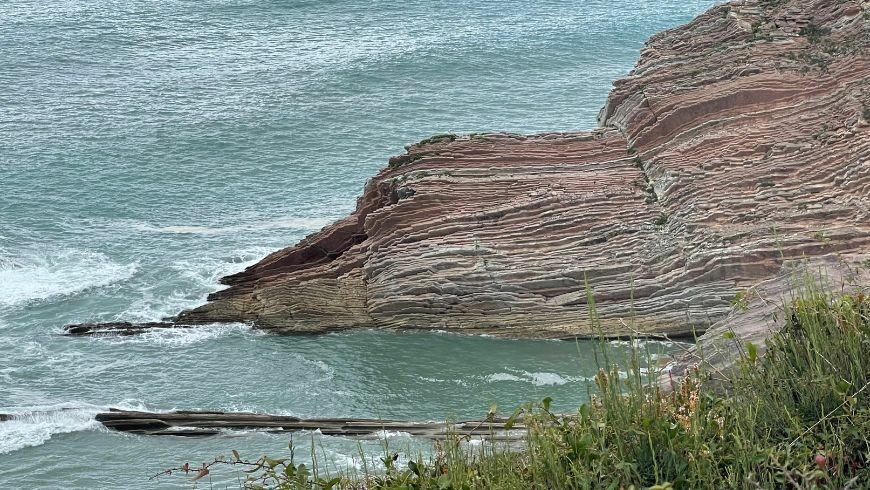
“Flysch” is the name of this interesting phenomenon. Thanks to it, there’s no need for excavation to gather geological information about what happened in different eras. For example, a thin layer of black color testifies to the impact of an asteroid on our planet. Another layer reveals the causes of the disappearance of dinosaurs.
The 13 km of the Basque Coast included in the Geopark can be explored with hikes, boat rides, or horseback riding. Besides the Flysch phenomenon, you can admire natural beauty and charming rural areas with grazing animals along the road.
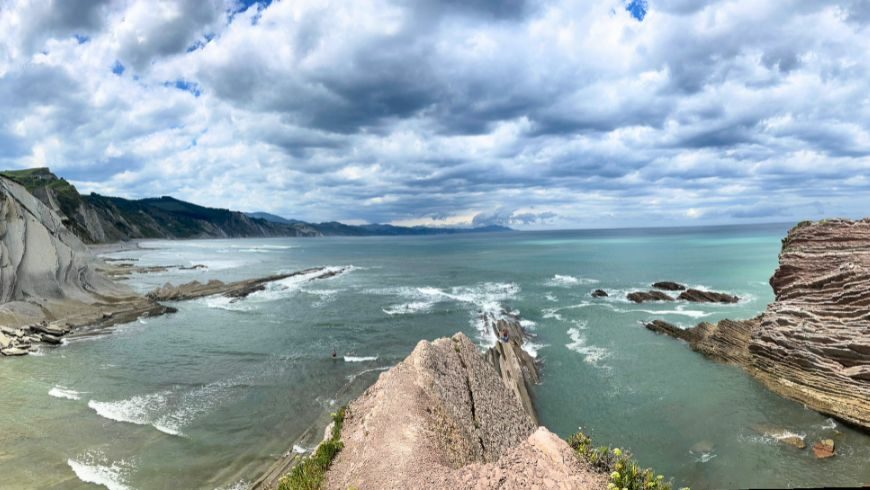
We follow the “Ruta del flysch” stage from Zumaia to Deba. It’s about 14 km long and takes approximately 4 hours to walk. Also, this route coincides with the famous “Camino de Santiago” in the “Camino del Norte” variant. It offers enchanting views of the sea and hills, with various shades of green gently intertwining among the large flysch rocks. Above all, the path climbs in elevation, providing breathtaking panoramas from the heights of small villages and the coast. Upon arrival at small beaches or rocky outcrops, they offer the opportunity of a refreshing swim in the sea.
2. The Sentier du Littoral from Hendaye to Bidart
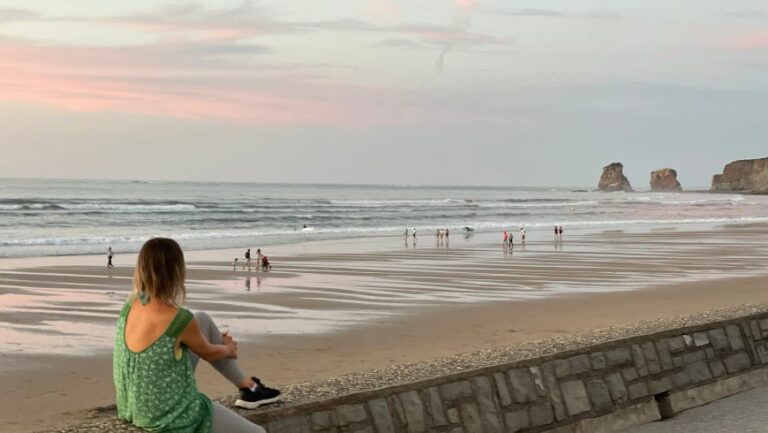
This path, between land and sea, winds from Bidart to Hendaye and can even continue to Bilbao following the Camino del Norte. The land of Labourd is often overlooked by tourists who crowd Biarritz and Bayonne. By this they are missing out on this rural paradise with breathtaking landscapes and idyllic villages.
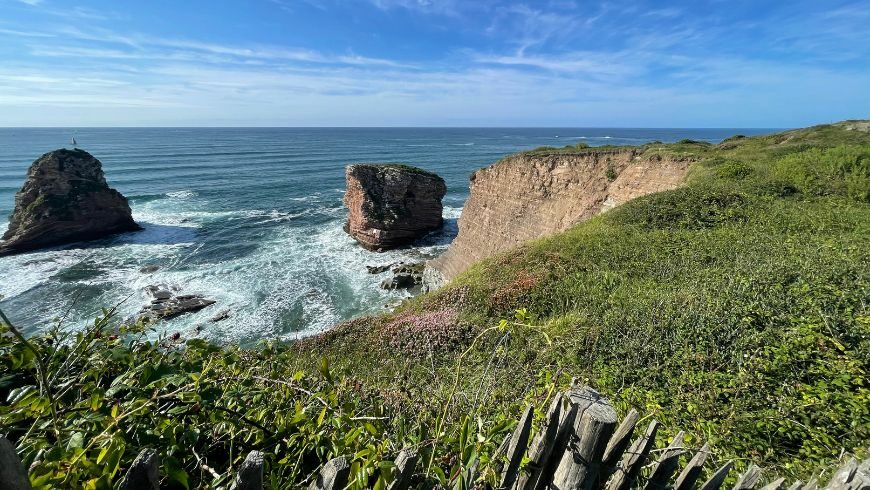
One of the most picturesque stretches of the Sentier du Littoral is between Hendaye and Domaine d’Abbadia, that runs along a green hill overlooking the sea. The Pyrenees and the ocean have shaped this piece of land over millennia, where the Flysch phenomenon is also visible.
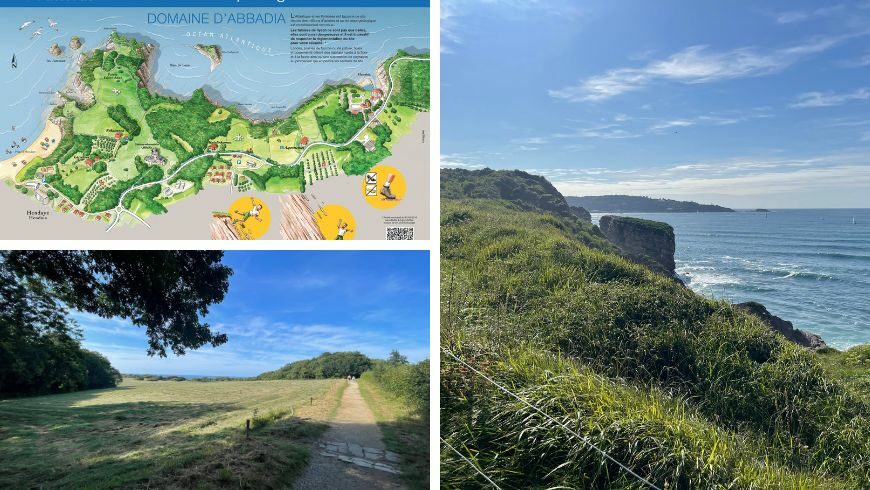
You enter a rural paradise, surrounded by crops, fruit trees, and old farmhouses that now serve the natural park. Along the trails, you’ll reach the Chateau-Observatory Abbadia, a palace built in the second half of the nineteenth century.
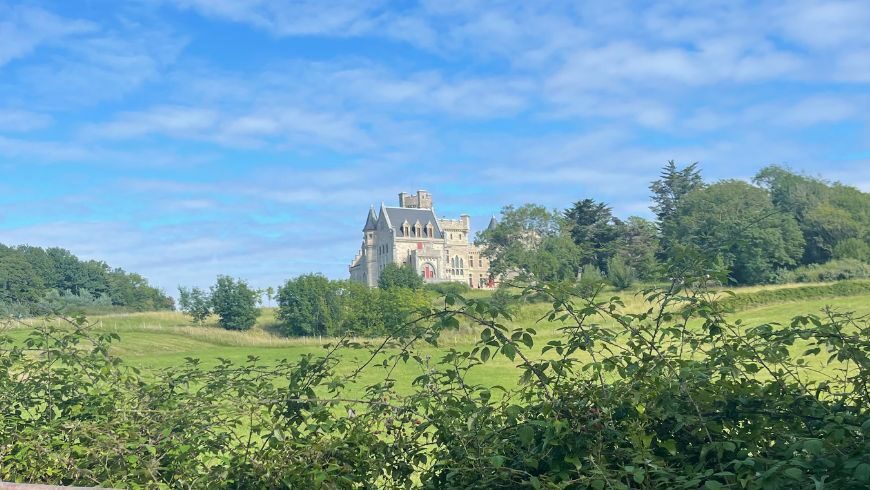
On the outside, the neo-Gothic building resembles a medieval castle. Inside you can discover the eclectic personality of the owner, Antoine d’Abbadie. He deeply connected to his Basque origins but also as a great traveler. He installed an astronomical observatory and numerous scientists used it until the 1970s.
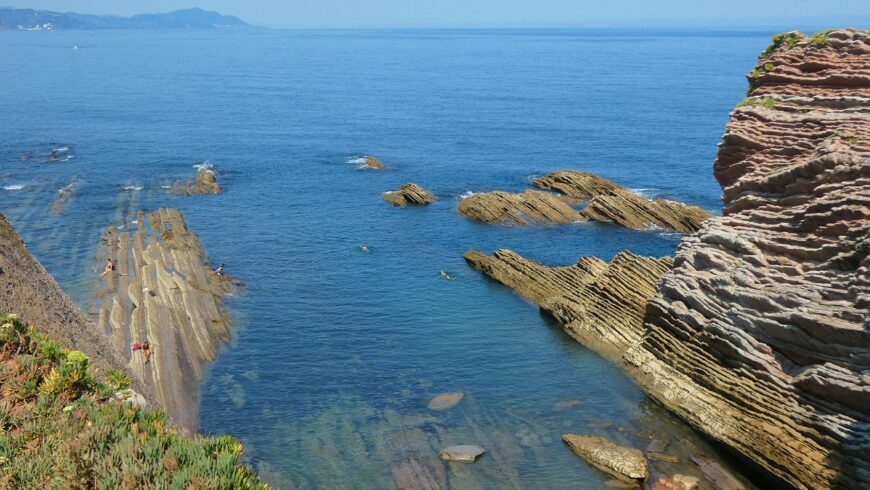
The 25 km of green itinerary that winds through the Domaine d’Abbadia is within a protected area overlooking the sea, accessible only on foot, and where dogs are not allowed. The natural area has 7 gates and 6 information points. Here you can study about the flora and fauna, history, and geology of the place and starts from Hendaye. Later it crosses the municipalities of Urrugne, Ciboure, Saint Jean de Luz, Guéthary to reach Bidart.
3. The Border Between France and Spain by Bicycle
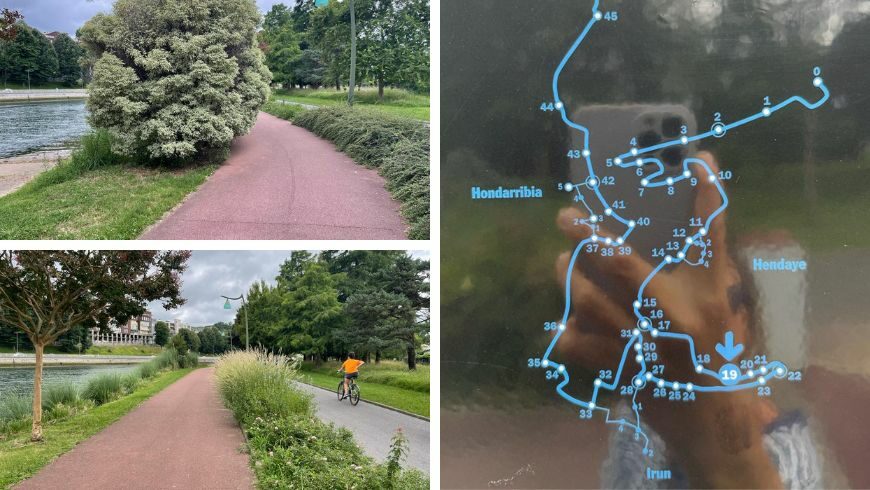
Above all, along the Basque Coast, you’ll find beautiful cycling paths. Among the various possibilities, we recommend the one that crosses the border between France and Spain.
Undoubtedly the bicycle route from Hendaye to Irun represents a fascinating cycling adventure along the beautiful Basque coast. Pedaling along this scenic route, the view of the ocean on one side, and the majesty of the hills on the other captivates you. Well-maintained trails and bike paths offer an easy route, allowing cyclists to immerse themselves in the beauty of the Basque region effortlessly.
Starting from Hendaye is the last French town on the coast before entering Spain. You can cycle onward on the 3 km bike path along the golden beach and continue for about 10 km to the Spanish town of Irun. The way follow the banks of the Bidasoa River that divides the two countries.
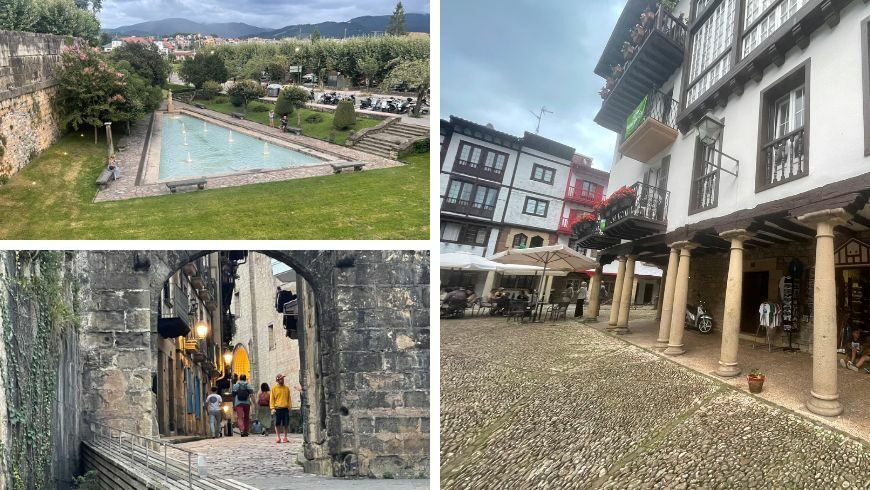
Another very suggested option for crossing the border between France and Spain is by sea. A ferry connects the shores of Hendaye’s port to the Spanish town of Irun approximately every twenty minutes.
As the blue waters of the Bay of Biscay gently embrace the boat, the natural beauty of the Basque Coast surrounds you. In addition, the huge cliffs, golden beaches, and picturesque villages along the coast create a breathtaking scenery.
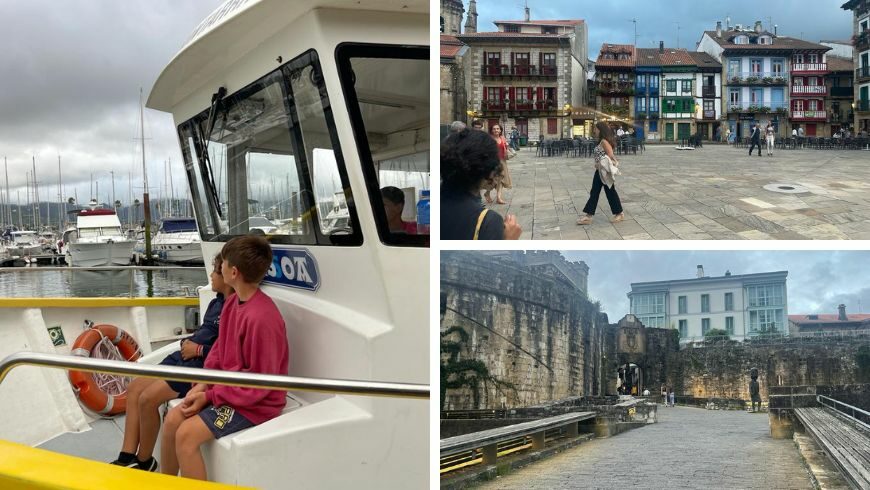
Upon arriving in Irun, you will dive in a welcoming and authentic local atmosphere. Indeed, this charming Basque city offers a unique blend of culture, history, and tradition.
Furthermore, the cobblestone streets, lively squares, and colourful buildings create a captivating environment for visitors. As you explore Irun, you can discover the region’s cultural heritage through its culinary traditions.
Among the most famous specialities is “pintxos”. It is a variety of snacks that they serve in local bars, offering amazing flavours with ingredients like fresh fish, exquisite cheeses, olives, spicy peppers, and seasonal products. “Bacalao a la vizcaína”, a dish made with cod prepared with a sauce of red peppers and tomatoes. It is an icon of Basque cuisine, as well as “txuletón”, a succulent grilled beef steak.
In conclusion, the best way to discover the breathtaking landscapes of the Basque Coast is slowly, on foot, by boat, or by bicycle. Each of the three green routes we have described offers an authentic and engaging experience.
From walks along the Camino del Norte and the Sentier du Littoral to bike and boat routes along the Spain-France border, to exploring picturesque towns and local culinary delights, these itineraries allow you to embrace the true essence of the Basque Coast!
Original article written by Silvia Ombellini
